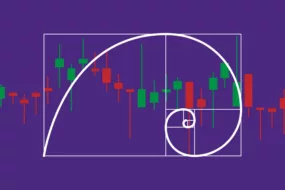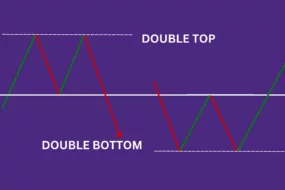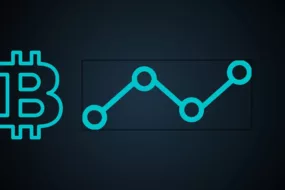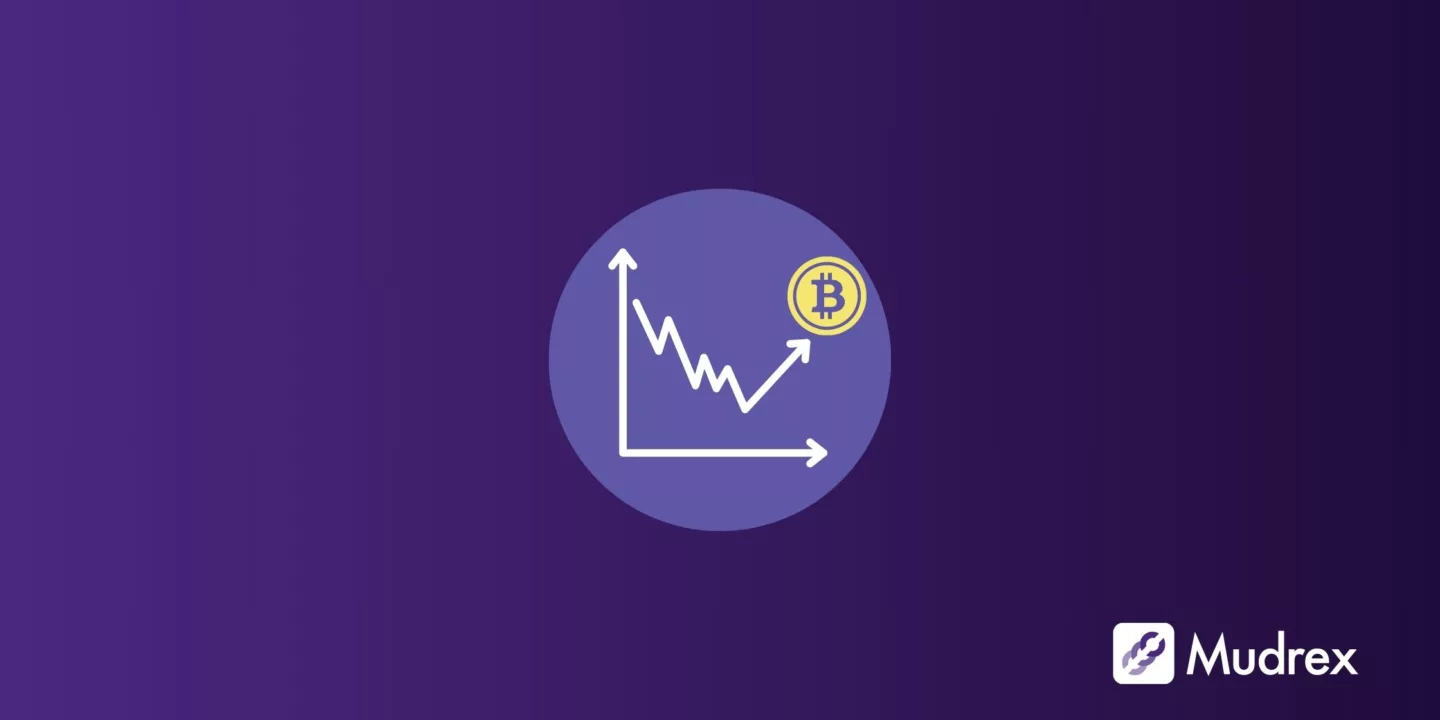
What is a Trend Reversal in Crypto? How to Spot it?
Every trader has faced this—buying just before the price drops or selling right before it rises.
It feels like the market is working against you, but in most cases, it comes down to misreading trends. Not every dip is a crash, and not every rally is a long-term uptrend. The ability to tell the difference is what separates reactive traders from those who navigate the market with clarity.
Understanding trend reversals will help you build more confidence in trading, which will translate to better risk management, better profits, and lesser losses.
Defining a Trend Reversal: What it is, and what it isnt
Let’s start with the basics.
A trend in the crypto market is a general direction in which the price of an asset moves over a period of time. It can be
- upward (bullish),
- downward (bearish) or
- sideways (range-bound).
Trends are formed by market sentiment, trading volume, and external factors like news and regulations.
Recognising trends helps you understand whether the market is gaining strength, losing momentum, or simply moving within a set range.
What Looks Like a Trend But Isn’t
Not every price movement signals a trend. Many traders mistake short-term fluctuations for real market direction, leading to premature entries and exits. Here are common false signals:
- Pullbacks: A temporary dip in an uptrend or a small rally in a downtrend is not a reversal. These are often areas where smart traders add to their positions.
- Fake Breakouts: A price moving past resistance or support briefly, only to return to its range, is not a trend shift—it’s often just volatility shaking out weak hands.
- News-Driven Spikes: A sudden price jump due to news can fade quickly if it lacks volume and follow-through. Real trends take time to build.
Signs of a Trend Reversal
Trend reversals don’t happen out of nowhere—they leave clues. If you can spot the signs early, you can position yourself before the market fully turns.
Candlestick patterns provide visual clues about market sentiment and potential reversals. When traders analyse these patterns alongside volume and key support/resistance levels, they can anticipate shifts in momentum before they fully unfold.
1. Doji: Indecision in the Market
A Doji candlestick forms when the opening and closing prices are nearly equal, creating a small-bodied candle with long wicks.
This suggests that buyers and sellers are in equilibrium, with neither side gaining control. A Doji at the peak of an uptrend or the bottom of a downtrend can indicate that the current trend is losing momentum.
Example: If Bitcoin rises from $100,000 to $130,000 but forms a Doji at $132,000, it signals hesitation among buyers. If the next candle is bearish with increasing volume, a reversal is likely.
2. Engulfing Candles: Strong Momentum Shift
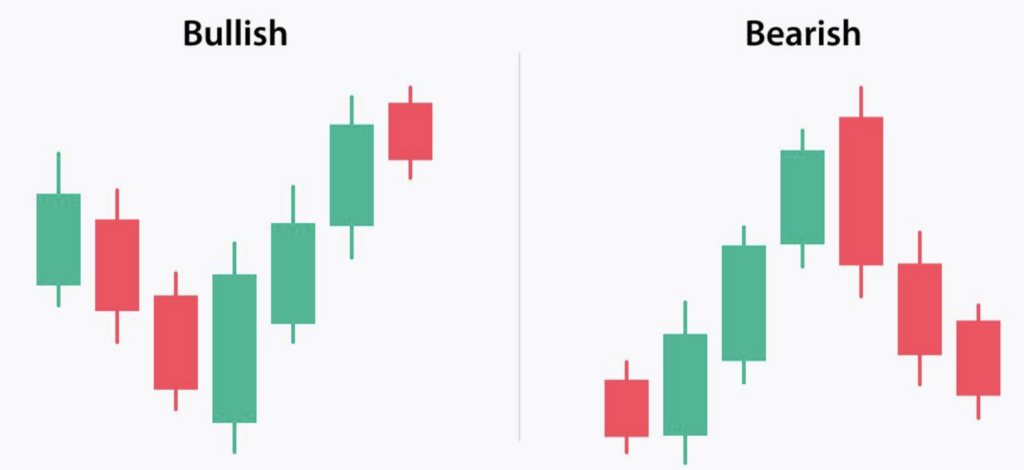
An engulfing pattern occurs when a larger candle completely “engulfs” the previous one, signalling a power shift between buyers and sellers.
- A bullish engulfing pattern appears after a downtrend, where a large green candle fully covers the previous red candle, suggesting a potential upward reversal.
- A bearish engulfing pattern appears after an uptrend, where a large red candle overtakes the previous green candle, indicating strong selling pressure.
Example: If Bitcoin reaches $130,000 after a strong rally but then forms a bearish engulfing candle at $132,000, it suggests sellers are stepping in aggressively. If this is followed by a break below $125,000, a downtrend may begin.
3. Head & Shoulders: A Classic Reversal Pattern
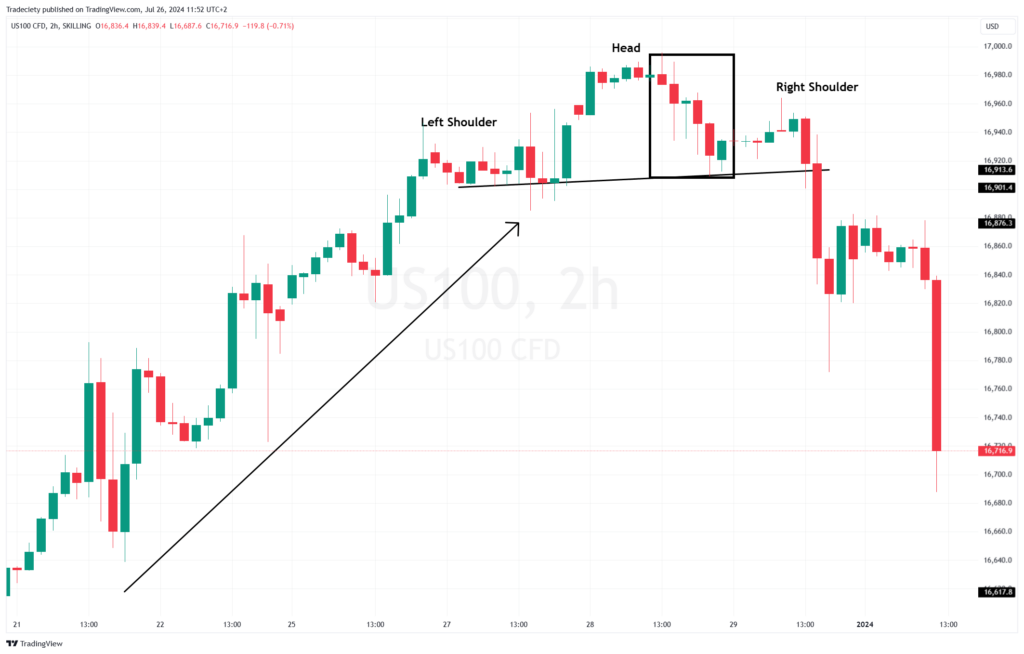
The Head & Shoulders pattern is one of the most reliable trend reversal formations. It consists of:
- Left Shoulder – An initial high followed by a pullback.
- Head – A higher peak followed by another decline.
- Right Shoulder – A lower high, indicating weakening momentum.
Once the neckline (support level) is broken, it confirms a bearish reversal.
Example: If Bitcoin rises from $100,000 to $130,000, forms a peak at $132,000, then drops to $125,000, rebounds to $129,000, and falls again, it forms a Head & Shoulders. If price breaks below $125,000, a deeper correction could follow.
Similarly, the Inverse Head & Shoulders pattern works in reverse, signalling a potential bullish reversal after a downtrend.
Why These Patterns Matter
Candlestick patterns are most effective when combined with other indicators like volume, RSI divergence, and support/resistance levels. Spotting these formations early allows traders to anticipate trend reversals and adjust their positions before the broader market reacts.
Candlestick patterns act as the first line of defence in identifying potential trend reversals. They offer a visual snapshot of market sentiment, showing whether buyers or sellers are gaining control.
However, relying solely on these patterns can lead to false signals. To confirm a reversal with higher accuracy, traders must use technical indicators like RSI, MACD, and volume.
Here are some ways to confirm the trend reversal.
1. Break in Market Structure
- Uptrends rely on higher highs and higher lows. If the price fails to make a new high, momentum is slowing.
- Downtrends depend on lower highs and lower lows. If the price stops making new lows, the selling pressure is weakening.
2. Divergence Between Price and Indicators
Market indicators like RSI and MACD help traders gauge momentum. When these indicators move in the opposite direction of price, it signals that the current trend may be weakening.
- RSI Divergence – If price makes a new high but RSI forms a lower high, it signals weakening bullish momentum. The same applies in reverse for bearish trends. You can read more about the Relative Strength Indicator, here.
- MACD Crossovers – When the MACD line crosses below the signal line in an uptrend (or above in a downtrend), it hints at a possible reversal. Read more about the MACD indicator here.
3. Volume Doesn’t Support the Trend
- A strong trend is backed by increasing volume. If price moves higher but volume declines, the rally is losing strength.
- Sudden spikes in volume near key levels (support/resistance) often indicate a shift in control between buyers and sellers.
Imagine Bitcoin is in an uptrend, rising from $100,000 to $130,000 over two weeks. If this rally happens with increasing volume, it suggests strong buying interest, confirming the trend.
But if Bitcoin continues rising towards $132,000 while trading volume starts to decline, it means fewer buyers are stepping in. This signals weakening momentum and a possible reversal.
If volume spikes suddenly as price drops back to $125,000, it suggests sellers are regaining control, confirming a trend shift.
Conclusion
A trend reversal is not just a sudden change in price—it’s a shift in market sentiment backed by clear signals. Understanding these signals separates impulsive trades from strategic decisions.
By recognising candlestick patterns, confirming reversals with indicators, and analysing volume trends, traders can position themselves ahead of major market shifts. The key is patience and confirmation—acting too early can lead to false signals, while waiting for clear validation ensures better risk management.
This is where Mudrex can help. Mudrex gives you an easy to use app for investing and trading in Crypto. We also have a growing telegram community where you can get market Insights, and talk to our trading experts. Download the Mudrex app and start trading now.


